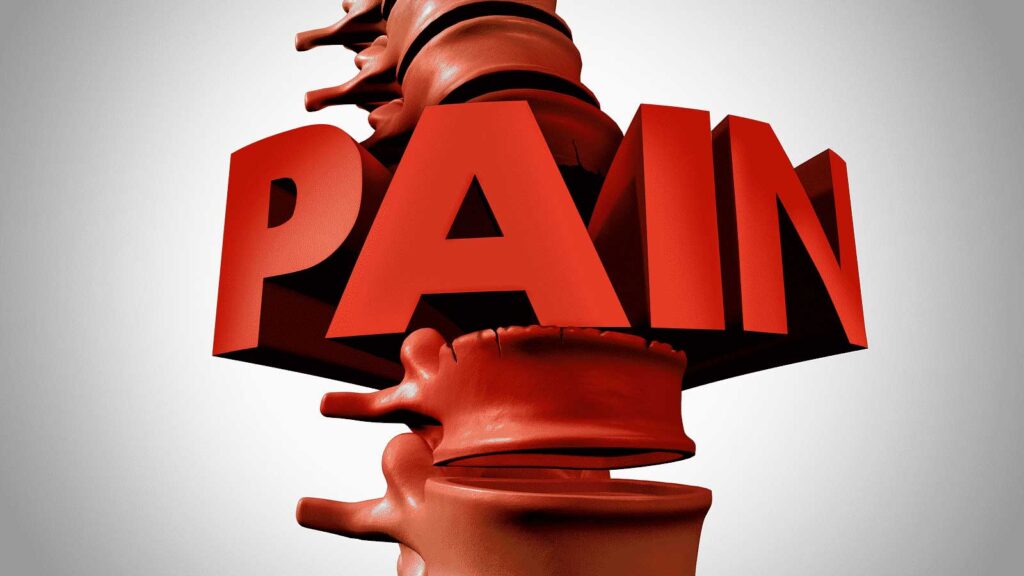Introduction: A Medication That May Still Require Detox
Buprenorphine is often described as a breakthrough medication for treating opioid use disorder (OUD). While it has indeed helped many individuals reduce or avoid heroin or full-agonist opioid use, there’s an overlooked truth that deserves attention: Buprenorphine itself can lead to physical dependence and withdrawal—and in many cases, patients eventually require an opiate detox to stop taking it.
This blog explores why buprenorphine, despite its role in harm reduction, is not always a lifelong solution—and how the body and brain adapt to it in ways that can complicate withdrawal. We’ll discuss the science behind buprenorphine dependence, the symptoms of withdrawal, why many people struggle to taper off, and why medically assisted detox is sometimes necessary.
What Is Buprenorphine?
Buprenorphine is a partial opioid agonist, meaning it binds to opioid receptors in the brain but does not fully activate them like drugs such as heroin, oxycodone, or fentanyl. It is commonly prescribed under brand names like Subutex or in combination with naloxone (Suboxone®) to treat opioid dependence.
Buprenorphine’s unique properties make it effective at:
- Reducing cravings
- Blocking the effects of stronger opioids
- Lowering overdose risk
- Preventing withdrawal symptoms when taken consistently
However, being safer than heroin or fentanyl does not mean it’s free of withdrawal risk or long-term physiological consequences.
Buprenorphine and Physical Dependence: The Neurobiology
Buprenorphine acts primarily on the mu-opioid receptor, the same receptor targeted by other opioids. Over time, the brain adapts to the drug’s presence by:
- Reducing its own production of endorphins
- Altering receptor sensitivity and density
- Creating a new baseline of “normal” with buprenorphine onboard
This results in physical dependence, even though the individual may no longer be using illicit drugs. If buprenorphine is reduced too quickly or stopped abruptly, the body responds with withdrawal symptoms similar to—or even longer-lasting than—those caused by full agonist opioids.
Why Buprenorphine Withdrawal Can Be So Difficult
Unlike short-acting opioids, buprenorphine has a long half-life, typically ranging from 24 to 60 hours. This means it stays in the system longer and wears off more slowly—but that also makes withdrawal more drawn out.
Common Buprenorphine Withdrawal Symptoms Include:
- Anxiety and irritability
- Muscle aches and joint pain
- Insomnia and restless sleep
- Nausea and digestive upset
- Chills, hot flashes, and sweating
- Depression and emotional instability
- Cravings that can persist for weeks
These symptoms can last longer than those associated with heroin or fentanyl withdrawal, often peaking several days after cessation and lingering for 10 to 20 days or more. In some cases, patients experience Post-Acute Withdrawal Syndrome (PAWS) that extends for months.
Buprenorphine Withdrawal Timeline: What Patients Actually Experience
While everyone’s experience is unique, buprenorphine withdrawal typically follows a delayed but prolonged timeline due to the drug’s long half-life. Here’s a general breakdown of what many patients report:
Day 1–2 (24–48 hours after last dose):
- Mild symptoms may begin, especially for those on lower doses.
- Anxiety, restlessness, and slight body aches might surface.
- Because buprenorphine has a long half-life, symptoms may be minimal or delayed.
Day 3–5:
- Symptoms intensify. This is usually the peak of withdrawal.
- Common effects: insomnia, hot flashes, sweating, goosebumps, nausea, and increased anxiety.
- Emotional distress and intense cravings may emerge.
- Many describe this period as physically draining and emotionally unstable.
Day 6–10:
- Physical symptoms may ease, but sleep problems and mood swings can persist.
- Depression, irritability, and low motivation are common.
- Cravings may return unexpectedly, making this a high-risk phase for relapse.
Week 2 and Beyond:
- Psychological and emotional symptoms often linger.
- Some patients experience Post-Acute Withdrawal Syndrome (PAWS), which can last weeks or even months.
- Symptoms may include mood fluctuations, brain fog, low energy, and difficulty experiencing pleasure.
Important Note:
The severity and duration of withdrawal can vary based on:
- Length of buprenorphine use
- Daily dosage
- Individual metabolism and health
- Past opioid use history
- Whether the cessation was abrupt or tapered
This is why many patients choose medically supervised detox, especially when emotional or physical stability is hard to maintain on their own.
The Illusion of Safety: Long-Term Use and the Taper Trap
Many patients are told that they can taper off buprenorphine “whenever they’re ready.” But in reality, the tapering process is complex, highly individual, and often riddled with setbacks. The brain’s slow adaptation to the drug makes even small dose reductions feel overwhelming for some.
Some individuals find themselves stuck at low doses for years—not because they lack motivation, but because the neurological dependence is underestimated.
This situation creates what’s sometimes referred to as a “maintenance trap”:
- Fear of withdrawal prevents dose reduction
- Symptoms at low doses feel as bad—or worse—than when using illicit drugs
- Patients feel defeated, ashamed, and trapped in another cycle
It’s time to reframe this not as failure, but as a medical need for detoxification.
Why Some People Need Medical Detox from Buprenorphine
Medical detox is not just for people addicted to street drugs or high-dose opioids. Many people on long-term buprenorphine maintenance eventually realize they want to be completely opioid-free—but find themselves unable to taper without debilitating symptoms.
In these cases, medically assisted detox may be appropriate, especially when done in a hospital environment where vital signs can be monitored and symptoms managed.
Benefits of Medical Buprenorphine Detox:
- Stabilization and pre-detox medication to prepare the body
- Use of sedatives and adjunct medications to manage discomfort
- Around-the-clock care to ensure safety
- Emotional support and medical reassurance during the most intense phases
- Shortened withdrawal timeline with fewer complications
Programs like Waismann Method®, for example, offer sedation-assisted detox, where patients are placed under medical supervision and sedated during the most intense stages of withdrawal. This approach is designed to reduce trauma, discomfort, and relapse risk during and after detox.
Myths About Buprenorphine Tapering and Detox
Myth 1: “It’s easy to taper off buprenorphine.”
Truth: Many people struggle with even micro-tapering and need additional medical or emotional support to succeed.
Myth 2: “You don’t need detox—it’s not a real opioid.”
Truth: Buprenorphine is a potent opioid with strong receptor affinity. The withdrawal can be just as real, and often more prolonged.
Myth 3: “If you can’t taper, you’re just not trying hard enough.”
Truth: This kind of thinking ignores the brain chemistry of dependence and undermines the physiological reality of long-term opioid exposure.
The Emotional Toll of Being Stuck on Buprenorphine
Patients who reach out for help are often those who feel like they’ve traded one prison for another. They’re stable, but not free. They may feel judged by doctors, misunderstood by family, and uncertain of what comes next.
This emotional burden can lead to:
- Feelings of failure or shame
- Loss of motivation
- Increased anxiety or depression
- Reluctance to seek further treatment
Acknowledging that needing detox from buprenorphine is valid and legitimate can open the door to healing and hope.
Frequently Asked Questions (FAQ)
Can buprenorphine cause withdrawal symptoms?
Yes. Although it reduces withdrawal from other opioids, buprenorphine itself causes withdrawal symptoms if stopped abruptly or tapered too quickly.
How long does buprenorphine withdrawal last?
It can last from 10 to 20 days or more, with emotional symptoms sometimes lingering beyond that due to its long half-life.
Is it safe to stop buprenorphine cold turkey?
It’s not recommended. The physical and emotional symptoms can be intense, and medical detox may provide a safer and more humane option.
Who qualifies for buprenorphine detox?
Anyone who is physically dependent and unable to taper comfortably may be a candidate, especially those seeking complete freedom from opioids.
Final Thoughts: Seeking Freedom, Not Just Stability
Buprenorphine has been an important tool in managing the opioid crisis, but it is not the final destination for everyone. For those who want to be truly opioid-free, recognize the struggle to taper, or are emotionally ready to move forward—a medically supported detox is not just appropriate, it may be essential.
Acknowledging that buprenorphine can require opiate detox isn’t a contradiction—it’s a compassionate recognition of biology, brain adaptation, and individual readiness for a new chapter.
There is no shame in seeking help. And for many, that help starts with the truth: freedom is possible, even from the medications that were meant to save us.
Sources:
- SAMHSA – What is Buprenorphine? Side Effects, Treatment & Use
“To begin treatment, an OUD patient must abstain from using opioids for at least 12 to 24 hours and be in the early stages of opioid withdrawal. Patients with opioids in their bloodstream or who are not in the early stages of withdrawal may experience acute withdrawal.”
https://www.samhsa.gov/substance-use/treatment/options/buprenorphine - NCBI Bookshelf – Buprenorphine (StatPearls)
“Induction therapy with buprenorphine is initiated when patients experience mild-to-moderate symptoms of opioid withdrawal. Typically, treatment is commenced 12 hours after using short-acting opioids or heroin or at least 24 hours or longer after using a long-acting opioid, for instance, morphine or oxycodone controlled-release formulations.”
https://www.ncbi.nlm.nih.gov/books/NBK459126/ - JMIR – Social Listening for Patient Experiences With Stopping Extended-Release Buprenorphine
“Discontinuation of buprenorphine as a medication for opioid use disorder (MOUD) necessitates careful tapering to reduce opioid withdrawal symptoms and craving.”
https://www.jmir.org/2025/1/e71245 - Pennsylvania CAMPP – Buprenorphine Low-Dose Induction Using a Cross-Tapering Strategy
“Micro-dosing of buprenorphine uses microgram (mcg) doses, allowing for the induction of buprenorphine without the need to first experience withdrawal.”
https://penncamp.org/clinical/micro-dosing/ - Federal Register – Expansion of Buprenorphine Treatment via Telemedicine Encounter
“The Drug Enforcement Administration and the Department of Health and Human Services are amending their regulations to expand the use of buprenorphine treatment…”
https://www.federalregister.gov/documents/2025/01/17/2025-01049/expansion-of-buprenorphine-treatment-via-telemedicine-encounter





